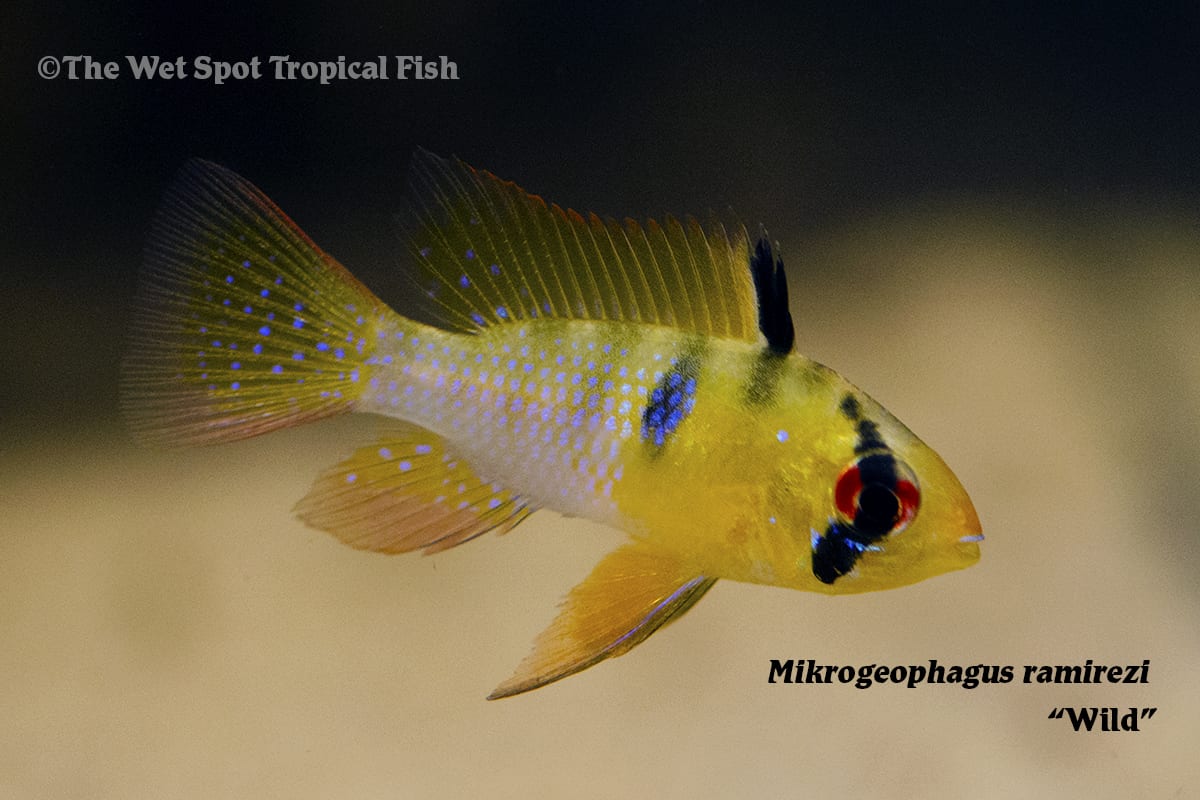Amazonians in Miniature
Amazonians in Miniature
With the highly anticipated release of the summer super hero smash starring everyone’s favorite Amazonian Princess, Wonder Woman, here at The Wet Spot, we are thinking more about our favorite Amazonian fish. Wonder Woman and her clan of super-powered goddesses exemplify the archetype of being larger than average, however, not everything that hails from this biodiverse region shares their grand stature. Like Wonder Woman, today we’ll focus our efforts on the little guys. Some of our favorites include Teleocichla proselyteus, Corydoras hastatus, and Mikrogeophagus ramirezi.
Scientific NameTeleocichla proselyteus
Common NameNone
Temperature / pH80 to 91°F / 5.5 to 7.0 pH
Native LocationAmazon basin
Preferred DietCarnivorous
Native to a wide collection of several flowing river basins that make up the greater Amazon River basin is a unique genus of cichlid known as Teleocichla. The latin name translates roughly to “perfect wrasse”, in which this group of fish are the smallest cichlids in South America. Reaching a maximum of 3.5 inches in length, “teleocichlids” have elongated bodies with short fins and pointed faces, and are generally quite beautiful and bright in coloration. Due to their proclivity of inhabiting flowing waters, they are susceptible to extinction caused by dams, and are thus rare and unique in the aquarist hobby. T. proselyteus is one of the 9 describes species in this genus that is found predominantly in Tapajos River of Brazil. Reaching just over 2 inches in length, these cichlids are light in color with black spotting and banding down their narrow bodies with shimmering-scaled fins. These fish live up to 5 years, and can be kept in a 1:1 male:female ratio in tanks with low light, a slight current, high clarity, and sandy substrate. In the wild, these cichlids are carnivorous and can be fed high quality meaty pellets supplemented with live and frozen fare. Optimal water conditions include temperatures between 80 and 91°F, pH of 5.5 to 7.0, and hardness between 21 and 42 ppm.
Scientific NameCorydoras hastatus
Common NameTail-spot Pygmy Cory
Temperature / pH68 to 79°F / 6.0 to 7.5 pH
Native LocationBrazil
Preferred DietSinking foods
Found swimming the bottoms of backwater habitats, floodplain lakes, and smaller tributaries with muddy-clay substrate all over the amazon main channel in Brazil is C. hastatus. Also known as “Tail-spot Pygmy Cories”, these fish reach just over an inch in length, and exhibit silver bodies with black and white patterning at the base of their caudal fins, as well as whisker-like barbels around their mouths. Since they live in such a wide distribution of Amazonian regions, rising and falling of water levels has caused distinct habitats to form splitting populations that eventually led to several sympatric species. Unique to C. hastatus is their ability to consume zooplankton, though they follow foraging practices of their genus and munch any aquatic invertebrates from the bottom substrate as well. In captivity, they happily eat high quality sinking pellets supplemented with occasional live and frozen treats like bloodworm or daphnia. As bottom feeders, optimal tank substrate is fine sand, though rounded gravel works so long as it is kept squeaky clean at all times. These Cories also require low light and several hiding spots to retreat to, though the types are left to the preferences of the aquarist. Some examples include driftwood, branches, tangles, caves, floating vegetation and leaf litter. Peaceful and gregarious, these fish are ideal as the benthic inhabitants of mixed-species tanks, though they should be kept in conspecific groups of 6 or more. So long as their is no competition within their foraging domain, and they are not kept in tanks with larger aggressive species, Tail-spot Pygmy Cories do well in just about any community. These Cories thrive in waters with temperatures of 68 to 79°F, with pH between 6.0 and 7.5, and hardness of 36 to 216 ppm.
Scientific NameMikrogeophagus ramirezi
Common NameRam Cichlid
Temperature / pH71 to 86°F / 4.0 to 7.0 pH
Native LocationColombia
Preferred DietCarnivorous
Small, but in no way less royal, The Wet Spot is proud host to a group of wild Colombian M. ramirezi. Found predominantly in the Rio Orinoco, but also in a distant Amazon tributary Rio Purus. Inhabiting extremely biodiverse settings of flooded grasslands, plains, and forests with low light, dense vegetation, soft sandy substrate, driftwood, branch, and root tangles, and dried leaf litter. They do best and show their incredibly vibrant coloration in tank setups close to their wild habitats. Reaching about 1.5 inches in length at maturity, these small geos have beautiful color patterning of blue, pink, yellow, orange, and dark black with spotted turquoise shimmering scales, and red eyes. Like their larger geophagus counterparts, these fish gulp sandy substrate and sift out the tasty bits through their gill slits. These beauties live in biodiverse settings in nature with many other fish species, however, in captivity they are best kept alone due to their requirement of pristine water conditions and a lack of aggression that makes them poor competitors. Generally peaceful, though territorial when breeding, these geos are best kept in pairs or female biased trios, though juveniles do well in gregarious settings. Carnivorous by nature, they should be fed regular meals of live and frozen fare like bloodworm, artemia, and daphnia, with high quality sinking pellets, or gelatin bound prepared foods containing shellfish, fresh fruit, or vegetables. These fish fare best in waters with temperatures between 71 and 86°F, pH of 4.0 to 7.0, and hardness of 18 to 179 ppm.
Great things come in small packages, and is up to us giants to treat them magnanimously.


